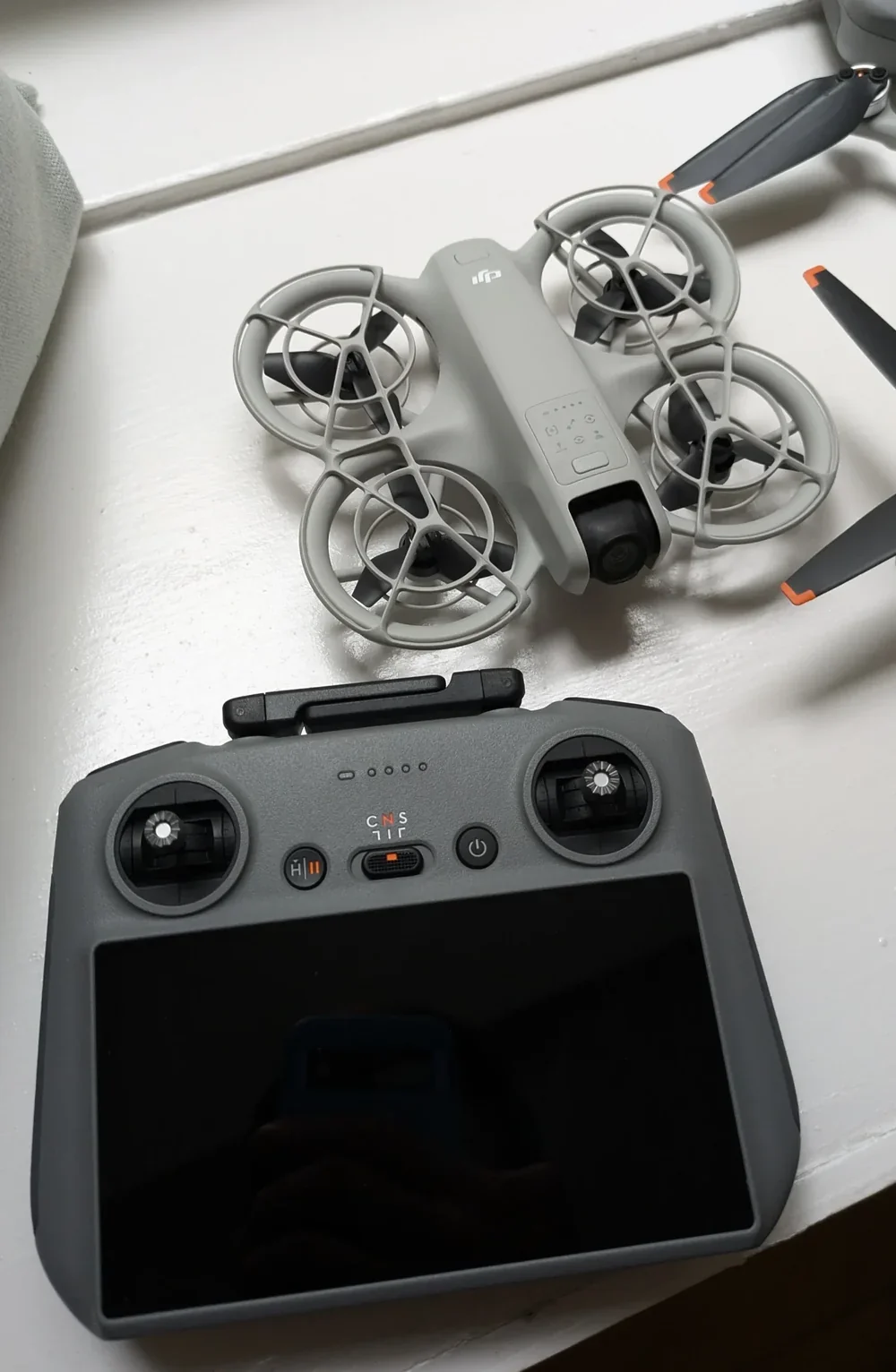
The truth is, your average drone battery will give you 20-40 minutes of flight time.
But as a GVC licensed drone pilot, my operational reality is that a safe, usable flight is often 5-10 minutes less than what's on the box.
Unexpected headwinds on a coastal job can slash your airtime by 30%, and launching with a cold battery below 15°C can cause a terrifying voltage drop just when you need stable power.
Whether you're trying to maximize your holiday shots or ensure you can complete a paid client mission on a single set of batteries, this guide shares the professional workflows I use to get the most from every single charge.
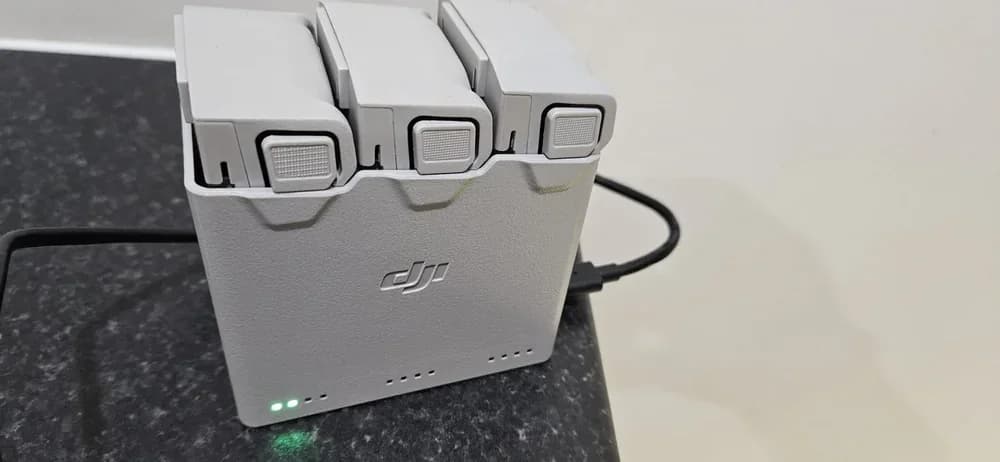
30 Second Summary
- Typical drone batteries provide 20-40 minutes of flight time per charge, with premium models offering longer durations
- Battery capacity measured in mAh directly affects flight time, with premium drones featuring 5,000mAh+ batteries for extended flights
- Environmental factors like wind, temperature, and flying style can reduce actual flight time by 10-30%
- Drone batteries typically last 200-300 charge cycles before degrading to 80% or less of original capacity
- Proper storage at 40-70°F with 30-60% charge and using manufacturer-recommended chargers extends battery longevity
Most consumer drones offer an average flight time of 20–40 minutes per battery
When shopping for a drone, one of the most important specifications to consider is battery life. Most consumer drones on the market today will provide you with 20-40 minutes of flight time per battery charge.
Entry-level models typically hover around the 20-minute mark, while premium drones from manufacturers like DJI and Autel can reach up to 40 minutes.
This flight duration directly impacts what you'll be able to accomplish during each session, whether you're capturing aerial photography, recording videos for aerial videography, or simply enjoying recreational flying.
I always plan my shots with the understanding that the last 20-30% of the battery is my safety buffer for returning and landing, not extra airtime. Pushing a battery to its absolute limit is a risk I never take.
Remember that actual flight times often fall short of advertised maximums due to factors like wind conditions, flying style, and payload weight. If you're planning longer drone sessions, investing in additional batteries or models with longer flight times will significantly improve your experience.
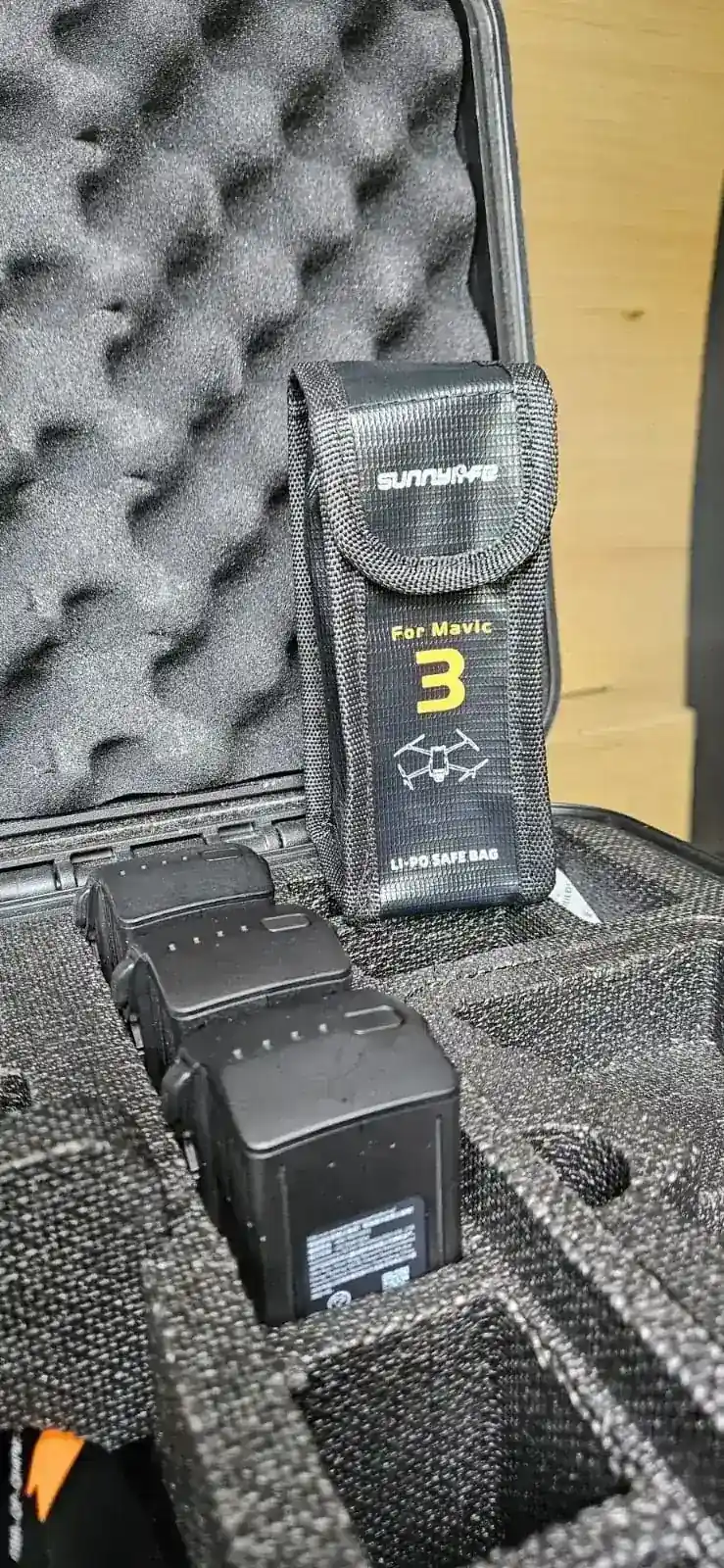
Larger battery capacities generally allow for longer flight times
Battery capacity directly correlates with how long your drone can stay airborne. Most manufacturers measure this in milliampere-hours (mAh), with higher numbers indicating larger energy reserves.
For example, a 3,000mAh battery will typically deliver longer flight times than a 2,000mAh option in the same drone model.
When shopping for drones, you'll notice premium models offer larger batteries—often 5,000mAh or more—which can extend flight times to 40+ minutes. However, remember that bigger batteries add weight, creating a balance between capacity and drone performance.
Some professional-grade drones use dual-battery systems to maximize flight duration without compromising lift capability.
While longer flight times are tempting, I often prefer carrying three standard batteries over one extended-life battery. It keeps the drone lighter and more responsive. Plus, if a battery unexpectedly fails, I haven't lost my entire day's flying potential; I can just land and swap to a fresh one.
Consider investing in multiple batteries if you need extended operation time. Quick-swap designs let you replace depleted batteries in seconds, effectively multiplying your drone's available flight time.
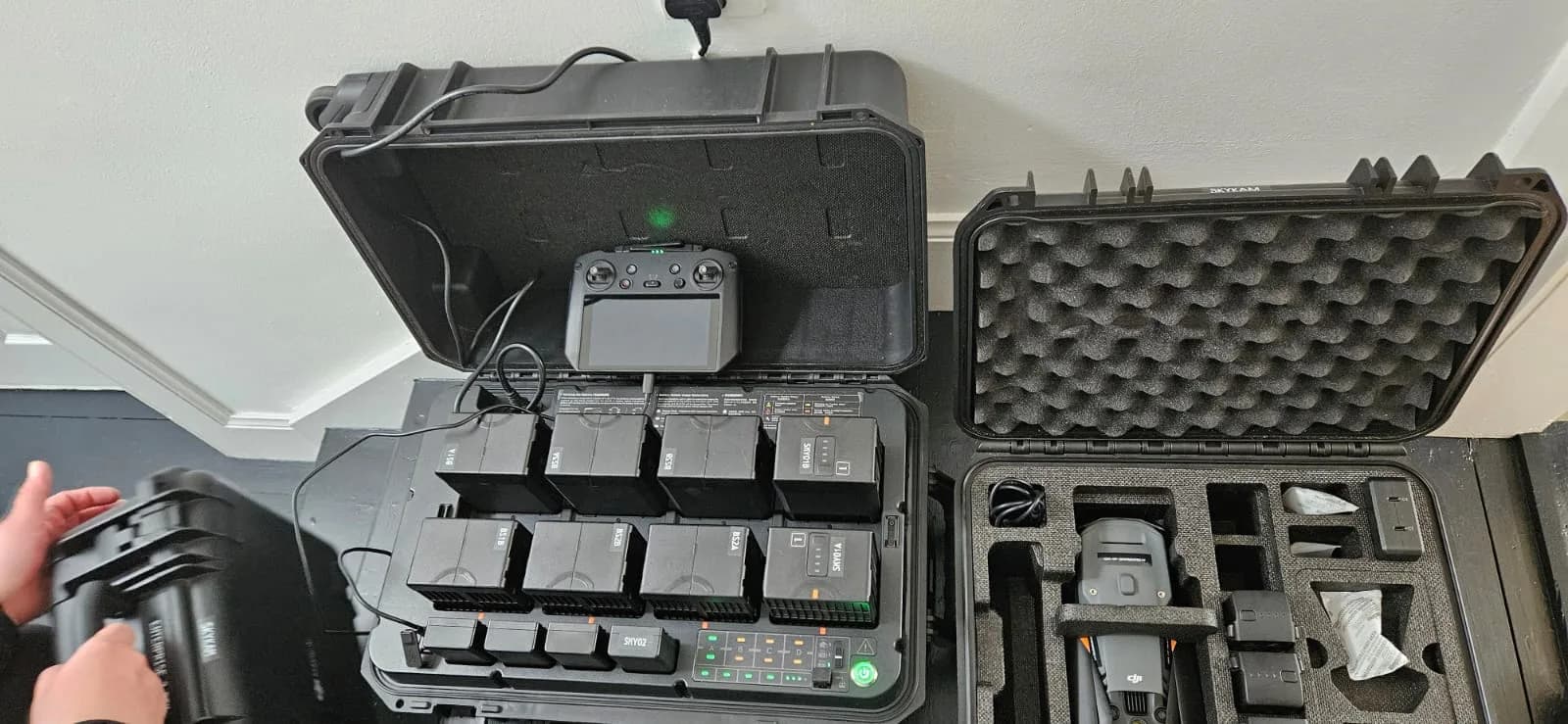
Understanding Drone Battery Technology
Why Most Drones Use LiPo Batteries
Most modern drones are powered by Lithium Polymer (LiPo) batteries.
Unlike the lithium-ion batteries in your phone, LiPo batteries offer a higher energy density, meaning they can store more power in a lighter package—a critical advantage for a drone. This technology allows for the rapid discharge rates needed to power a drone's motors during demanding maneuvers.
However, this performance comes with a trade-off: LiPo batteries are more sensitive and require careful handling, charging, and storage to operate safely and maintain their lifespan.
This is why you'll feel a battery is warm to the touch after a spirited flight. That warmth is a sign of the energy it's just expended. Giving it a 15-20 minute cool-down period before putting it on the charger is one of the best habits you can adopt.
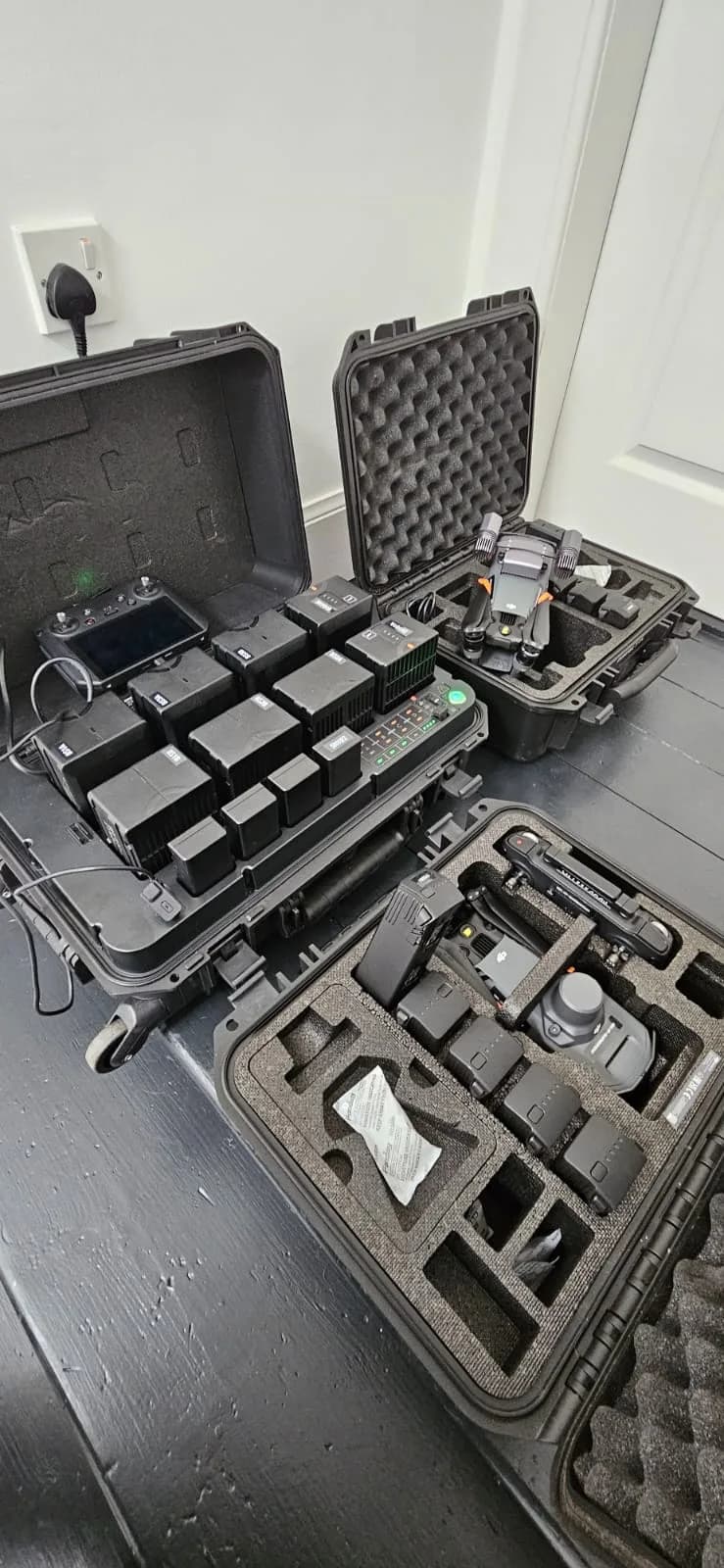
Wind, temperature, and aggressive flying can shorten battery life
Environmental factors and flying behavior significantly impact how quickly your drone's battery depletes. Strong winds force your drone to work harder to maintain position, increasing power consumption by 10-30%.
Temperature extremes also affect performance—batteries drain faster in cold weather (below 50°F/10°C) and can overheat in temperatures above 95°F/35°C.
I've personally seen a flight plan for 25 minutes get cut to just 15 because of an unexpected coastal wind. The drone's battery indicator dropped alarmingly fast as it fought to hold its position. In cold weather, I always keep my batteries in an inside jacket pocket, using my body heat to keep them warm before takeoff. A cold battery is an inefficient and unpredictable one.
Your flying style matters too. Aggressive maneuvers like rapid acceleration, high-speed flight, and sharp turns demand more power than steady hovering.
Features like obstacle avoidance and camera stabilization, while useful, add to the power drain. Even recording in 4K versus 1080p increases battery consumption.
To maximize flight time, fly in calm weather, maintain moderate temperatures, use smooth controls, and disable unnecessary features when possible. Monitor battery levels carefully to avoid unexpected landings.
Factor | Impact on Battery | Estimated Reduction |
|---|---|---|
Strong Wind (>15 mph) | Increased motor output to stabilize | 15-30% |
Cold (< 50°F / 10°C) | Slower chemical reactions | 10-25% |
Aggressive Flying | High power draw for maneuvers | 20-40% |
Added Payload | Increased lift requirement | 5-15% |
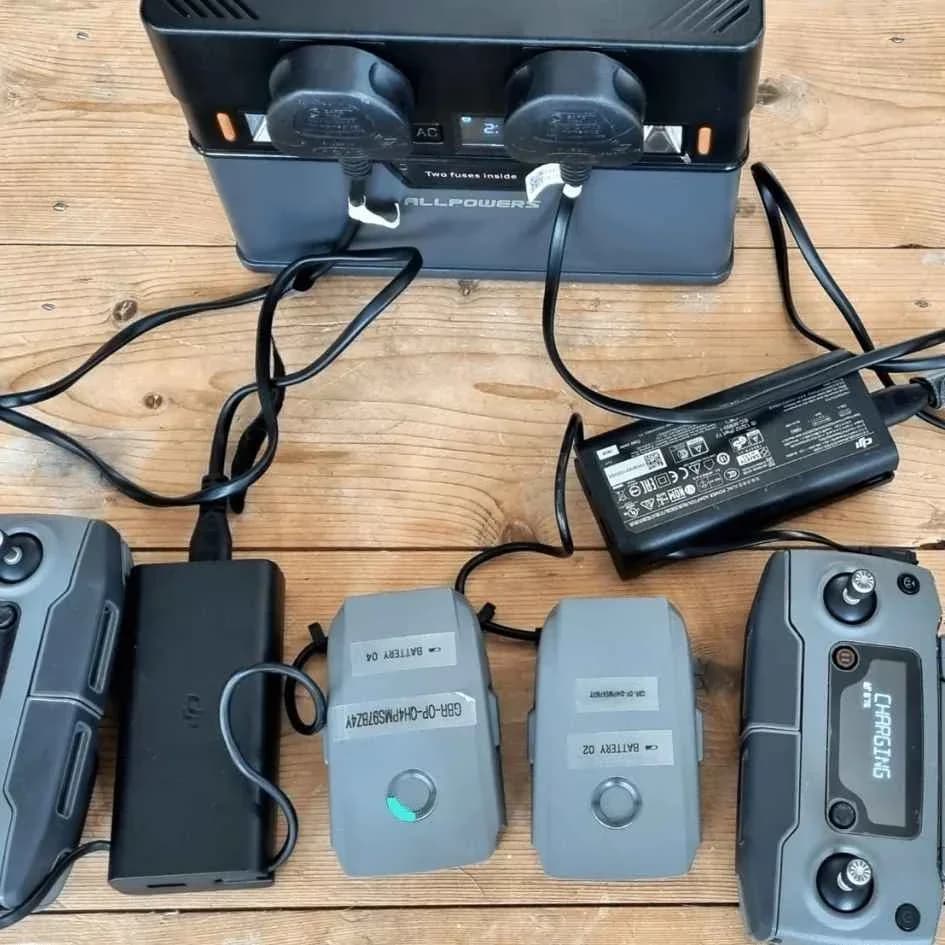
Drone batteries typically last between 200–300 charge cycles before losing capacity
Like all rechargeable power sources, drone batteries have a finite lifespan that extends beyond individual flight times. Most LiPo drone batteries will last between 200-300 complete charge cycles before you'll notice significant capacity degradation.
After these cycles, you'll typically see your battery holding 80% or less of its original capacity. This means a battery that once powered 25-minute flights might only manage 20 minutes under identical conditions. The degradation continues progressively with each subsequent cycle.
I treat my batteries like any other critical piece of kit. Once a battery passes 150-200 cycles, I'll 'retire' it from important client work and use it only for practice or non-critical flights. It's just not worth the risk of a potential failure in the air.
You can track cycle count through your drone's app or by manually logging charges. To maximize cycle life, avoid completely depleting your batteries, store them at about 50% charge when not in use, and keep them at room temperature. Properly maintained batteries might even exceed the typical cycle estimates.
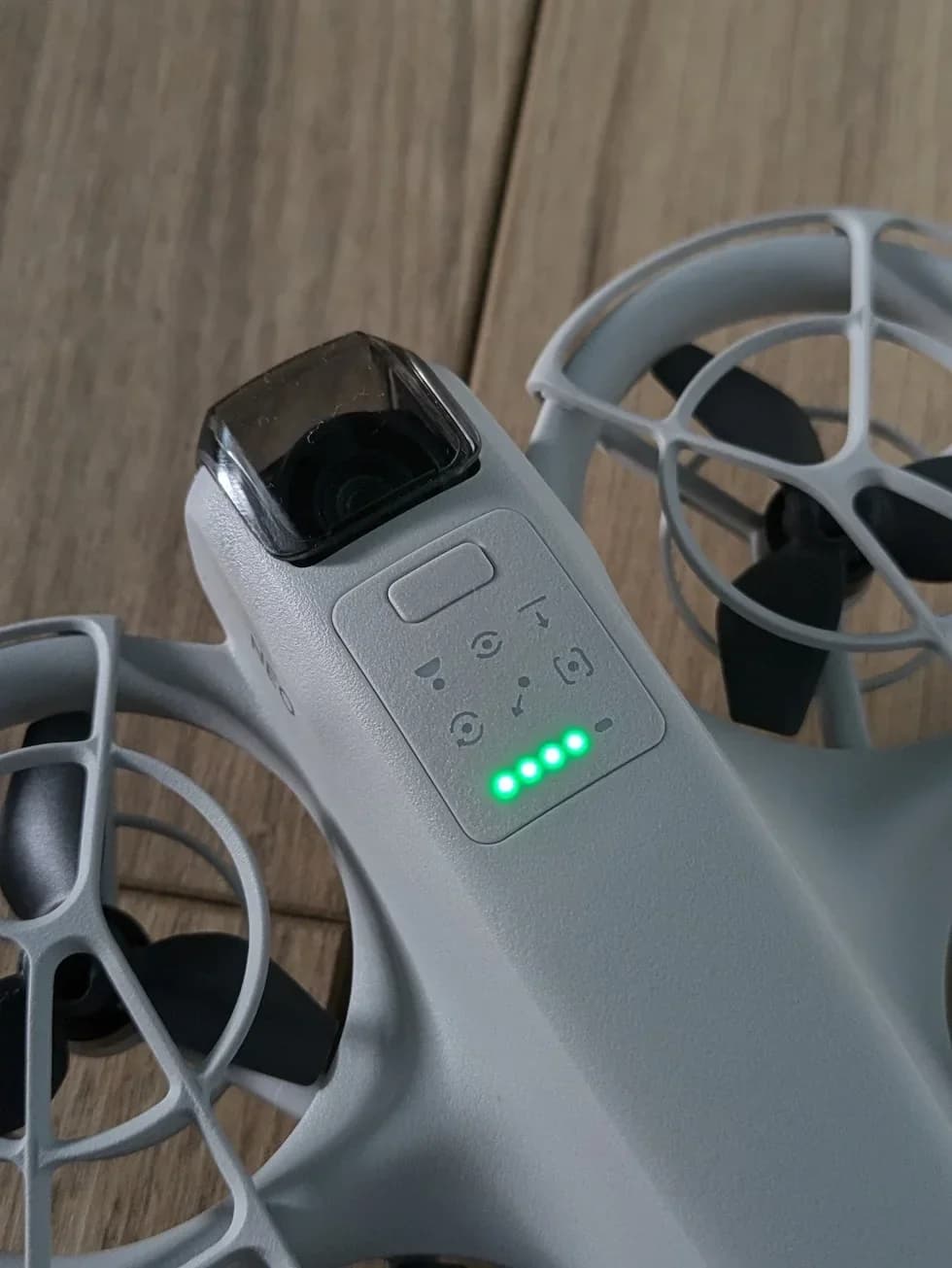
Proper charging habits and storage can extend a Drone battery’s lifespan.
Properly caring for your drone batteries when they're not in use is one of the easiest ways to extend their performance and lifespan.
My cardinal rule is never to leave batteries sitting at 100% charge. If a planned flight gets cancelled, the first thing I do is discharge them back to a storage level using the drone or charging hub. It might seem like a hassle, but it has a massive impact on their long-term health.
To maximize battery health, charge them to 80% before storage rather than 100%, which strains the cells. Store your batteries in a cool, dry place, ideally at temperatures between 40-70°F (4-21°C).
Never leave batteries fully discharged for extended periods, as this can permanently damage them. Instead, maintain a charge level of 30-60% for long-term storage. When you're ready to fly again, perform a full charge cycle.
Use only manufacturer-recommended chargers to prevent overcharging. Let batteries cool completely before recharging after flights. Following these practices can add dozens of charge cycles to your battery's useful life, saving you money and frustration.
Situation | Recommended Charge | Key Tip |
|---|---|---|
Long-Term Storage | 30-60% | Store in a cool, dry place (40-70°F). |
Before Flying | 100% | Fully charge just before your flight session. |
After Flying | N/A | Allow battery to cool before recharging. |
Disposal | < 30% | Tape terminals and take to an e-waste facility. |
How to Properly Charge Your Drone Batteries
Using the correct charging procedure is vital for battery health. Modern "smart" batteries and charging hubs simplify the process, but understanding the steps ensures you do it safely and efficiently.
Example: Charging a DJI Mini 4 Pro Battery
The DJI Mini 4 Pro, like most modern drones, uses a Two-Way Charging Hub that charges up to three batteries sequentially. Here’s how to use it correctly:
Insert the Batteries: Place one to three Mini 4 Pro batteries into the slots on the charging hub until they click into place.
Connect to Power: Use a manufacturer-recommended USB-C charger (like the DJI 30W USB-C Charger) to connect the charging hub to a wall outlet.
Charging Begins Automatically: The hub will automatically start charging the batteries one by one, beginning with the battery that has the highest current power level. This intelligent feature is designed to get you a fully charged battery for your next flight as quickly as possible.
Monitor the LED Lights: The LED lights on the batteries will blink to indicate their charging status. Once a battery is fully charged, its lights will turn solid green and then switch off. The hub will then begin charging the next battery in sequence.
Before I connect anything, I always give the gold contacts on the battery and the hub a quick visual check. Any dust or grime can interfere with a proper connection, so keeping them clean is a simple but important habit.
Understanding the Battery LED Status Lights
The four LED lights on your DJI battery are a quick visual guide to its status. Here's what they mean during charging:
LED Lights Pattern | Battery Level |
|---|---|
1st light blinking | 0-25% |
1st light solid, 2nd blinking | 25-50% |
1st & 2nd solid, 3rd blinking | 50-75% |
1st, 2nd, & 3rd solid, 4th blinking | 75-99% |
All lights are solid green, then turn off | 100% (Fully Charged) |
If the lights blink rapidly or in an unusual pattern, it may indicate a charging error due to temperature extremes or a damaged battery cell. Remove the battery and let it return to room temperature before trying again. If the error persists, consult your user manual.
Frequently Asked Questions
Can I Extend Flight Time With Power Banks Mid-Flight?
No, you can't use power banks to extend flight time mid-flight for most consumer drones. Drones aren't designed to be charged while operating, and connecting cables would interfere with flight dynamics. Instead, carry extra batteries and land to swap them out. For extended flights, consider specialized drones with hot-swappable batteries or tethered power systems that remain connected to ground-based power sources.
How Much Do Replacement Drone Batteries Typically Cost?
Replacement drone batteries typically cost between $20-$150 depending on your drone model. Entry-level toy drones have cheaper batteries ($20-40), while mid-range consumer drones like DJI Mini require $50-80 per battery. Professional drones with longer flight times have premium batteries costing $100-150 each. You'll pay more for official manufacturer batteries than third-party options, though off-brand alternatives might compromise performance or safety.
Are Third-Party Batteries Safe to Use With My Drone?
Third-party batteries can be safe for your drone, but they come with risks. You'll want to research reputable brands with positive reviews and proper safety certifications. Check compatibility specifications carefully before purchasing. Some manufacturers warn against non-OEM batteries as they might damage your drone or void warranties. For the safest experience, stick with batteries from your drone's manufacturer or highly-rated third-party options that specifically state they're compatible with your model.
How Can I Check My Battery's Health?
Most modern drones let you check battery health directly through their companion app (like DJI Fly or Autel Sky). Look for a battery information menu, which typically displays the total number of charge cycles, individual cell voltages, and temperature. A healthy battery will show consistent voltages across all cells. If you notice a significant voltage drop in one cell or if the cycle count is approaching 200, it may be time to consider a replacement.
Can Drone Batteries Be Taken on Commercial Flights?
Yes, you can take drone batteries on commercial flights, but only in your carry-on luggage. Airlines require lithium batteries to be stored in carry-on bags, not checked baggage. The FAA limits each battery to 100 watt-hours, though you can bring larger ones with airline approval. Always cap the terminals, store batteries in individual plastic bags, and check your specific airline's policies before traveling.
What Disposal Methods Are Recommended for Old Drone Batteries?
Always dispose of old drone batteries at certified e-waste recycling centers or battery drop-off locations. You shouldn't throw them in regular trash as they're hazardous waste. Many electronics retailers like Best Buy offer free recycling programs. Before disposal, discharge the battery to about 30% and cover terminals with tape. Some drone manufacturers also have take-back programs where you can send your used batteries for proper recycling.
Don't Let Battery Life Limit Your Project
Ultimately, getting the most from your drone comes down to expert battery management. Maximising your 20-40 minutes of flight time per battery, planning for the 200-300 cycle lifespan, and mitigating environmental factors are all part of a professional drone operator's workflow.
This is the exact challenge HireDronePilot was built to solve. Our network of GVC licensed drone pilots are experts in mission planning and on-site battery management, ensuring complex projects are completed efficiently without being cut short.
As the UK's premier managed marketplace, HireDronePilot connects businesses with verified professional drone operators for hire. We streamline drone services through competitive bidding, ensuring quality, compliance, and value for every aerial project across the United Kingdom. Find out more at https://hiredronepilot.uk/.
Stop letting battery anxiety ground your project. Hire a drone operator who brings the skill, strategy, and extra batteries needed to get the job done right.
About the Author

Written by
Peter Leslie
Peter Leslie is a CAA-approved commercial drone pilot with 10+ years experience and over 10,000 flight hours. He holds the GVC and A2 CofC drone licences with full CAA Operational Authorisation. Peter is a member of ARPAS-UK, the UK's non-profit trade association for the drone industry. He founded HireDronePilot to connect UK businesses with qualified, insured drone operators.
Looking for More Drone Work?
Join the UK's leading network of professional drone pilots and grow your business.
Open Access
Bid on any job - all jobs open to all pilots
Grow Revenue
Access high-value commercial projects
Stay Busy
Fill your schedule with regular work
Related Articles

Our Drone Survey Service In Stirling, Scotland
Bringing you Stirling drone survey data from areas no one else can fly.

How Much Does A Drone LiDAR Survey Cost
Forecasting your drone LiDAR survey cost requires understanding what's hidden beyond the initial quote.

Step By Step Process Of Drone LiDAR Survey
Next, discover the crucial post-flight steps that determine your survey's success.
